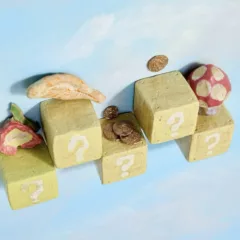How does a person become an international artist? Say, someone like Kenyan-born British artist Magdalene Odundo, now a world-renowned potter making clay vessels in ancient forms with quirky non-ancient marks. Odundo has a special guest residency through April at The Clay Studio in Old City. Clay Studio Curator Jennifer Zwilling says Odundo “makes the traditional, contemporary.”
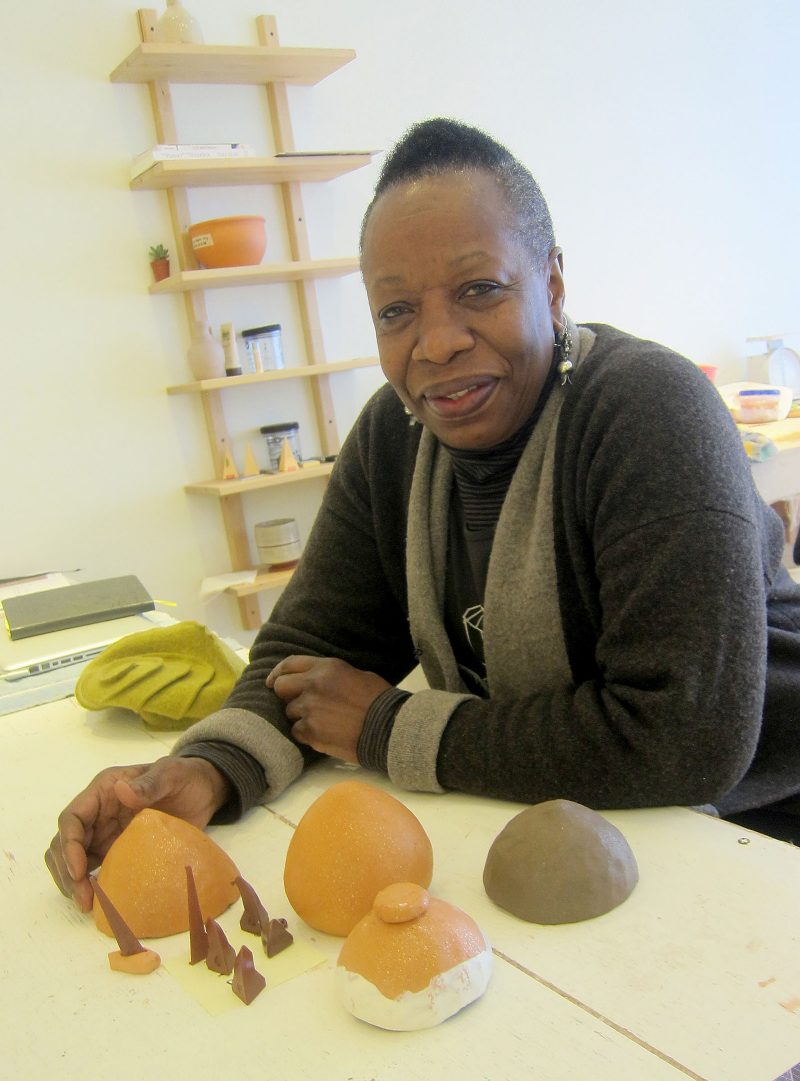
From design to clay, and from Kenya to England, India, Mexico, China, Japan and the U.S.
Her journey began decades ago when Odundo, the daughter of a Kenyan journalist, thought her future would be in two-dimensional art:graphics and commercial art, which she studied inNairobi. But she had a gnawing feeling that she wanted more.
“I might have always wanted … to do something tactile,”she told me recently at The Clay Studio. “I loved working with mezzotint.”
So she migrated to England in 1971 where she discovered the ultimate tactile activity, hand-making coiled clay pots. She studied, then traveled; studied, then traveled. In all, she attended four universities, but earned a bachelor’s degree in 1979 from West Surrey College of Art and Design, renamed the University of the Creative Arts, in Farnham, 41 miles southwest of London.Her master’s degree in 1982 is from the Royal College of Art in London. She later became a professor of art at her alma mater, University of the Creative Arts.
Odundo’s travels are legendary. Her interest in ancient clay techniques led her to Kenya, Nigeria, India and Mexico and, later, to China, Japan and the U.S. The information she learned hands-onin those countries profoundly influenced her work,and later her teaching.Which is not to say that British potters, luminaries in the field, such as the late Michael Cardew did not play a role. Odundo has said she confided her worries about art as a first year student to Cardew, her teacher, and he became her mentor, encouraging her growth as an artist.
A renowned inspirational teacher
By 2008, her teaching at the University of the Creative Arts had become famous, and she was appointed “Officer of the Most Excellent Order of the British Empire,”known as the prestigious OBE award. In 2014, she retired from college teaching, but has continued to guide and inspire students, including Tyler School of Art students during her recent two-day session at Temple University.
In fact, Odundo visits the U.S. at least three times a year, and has been to Philadelphia four times, where she has had art residencies Swarthmore College, Brandywine Workshop and Archives, as well as The Clay Studio (in 2017 and 2002).
After nearly four decades exhibiting clay vessels of organic forms marked by whimsy, she has become internationally known, with her work collected in international museums, including the Philadelphia Museum of Art. And yet, she will sometimes take a break from clay and work in bronze, glass, and occasionally, printmaking.
Vessels with humor and personality
While teaching, Odundo could take months to make a coiled pot, changing this, cutting that, stretching the neck asymetrically, imposing her distinctive marks, such as nipples, ridges, pinches. The orange clay work would be burnished twice:once in an oxidizing atmosphere, then covered in a slurry of water and clay, and fired a second time with reduced oxygen, which turns the vessels into shades of black, or sometimes a surprise of blacks and oranges, like a calico cat.
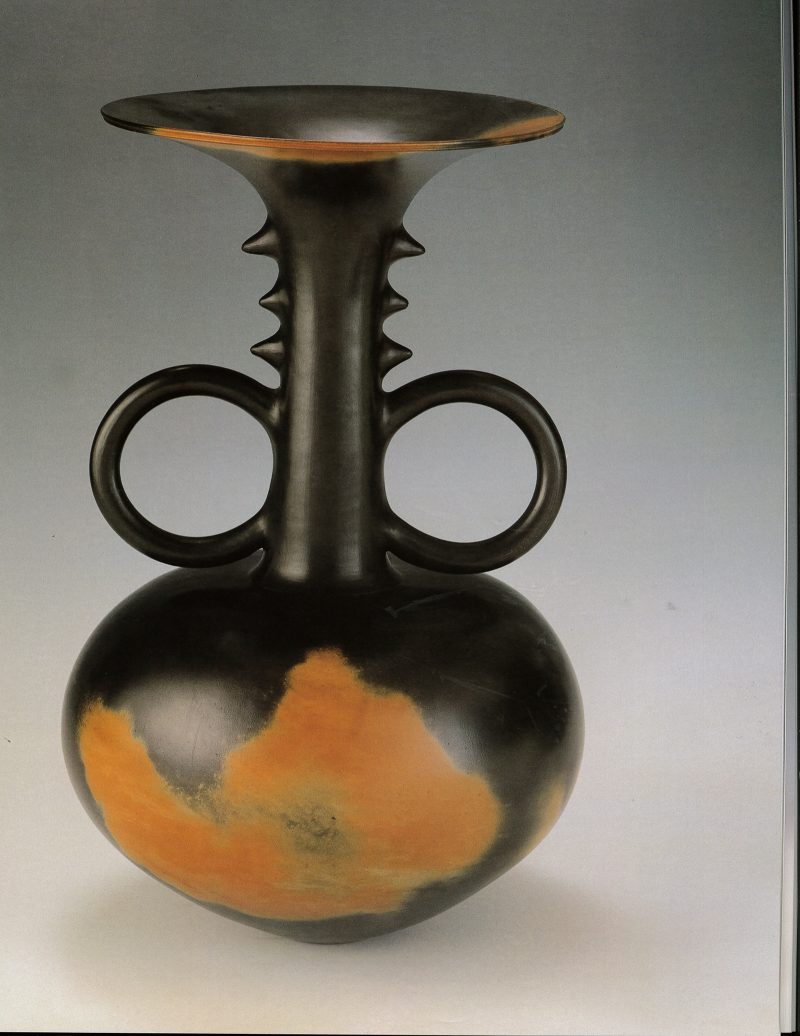
For an impending show of nine to 12 unique pieces, for example, she might work from 18-to-24 months on the pots, but with each work marked with its own distinct personality.
After inspecting Odundo’s vessels at an exhibit, the late British ceramic critic Emmanuel Cooper wrote: “Some of these are almost hilarious, in their audacity, their impudence, their cheekiness. Sometimes they almost preen too in a kind of marvelously beguiling self-satisfaction. They look as though they might laugh out loud.”
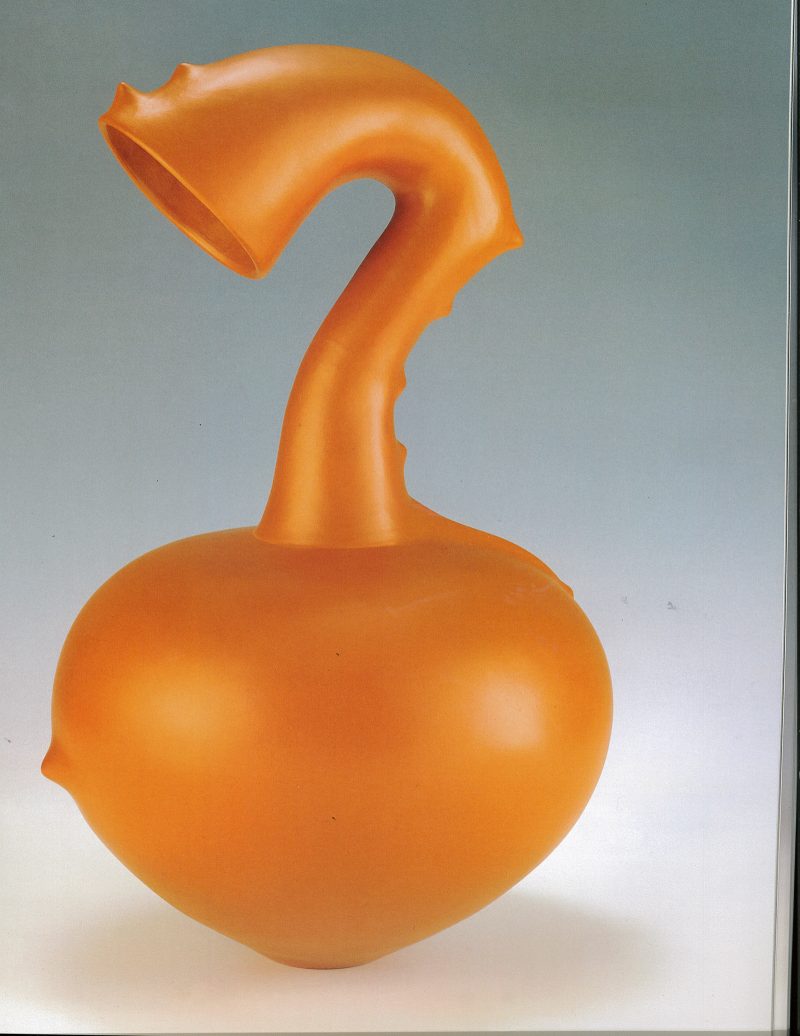
In fact, I did burst out laughing, looking atan asymmetrical shiny orange clay vessel with a long neck and an extended oval opening. It reminded me of an old-time hearing aid, the antecedent of one that my father wore.
“If I can have the magic to make you laugh,”she told me, “It’s an amazing moment.”
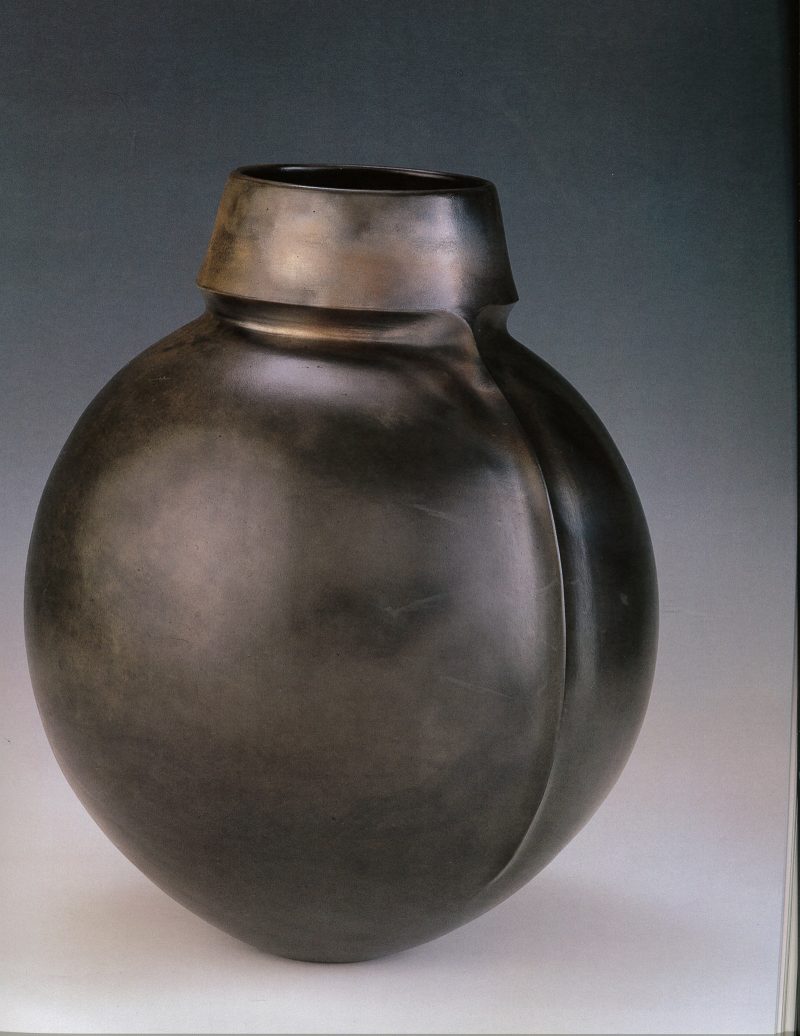
Pots that make people want to dance
The Philadelphia Museum of Art acquired a sleek black round vessel with a wide open mouth and a ridge, resembling a vertical spine on a bulbous body.
Odundo’s shapes, such as heart-shaped bottoms and wide-lipped tops, and marks that resemble pimples placed suggestively on upright and asymmetrical vessels can keep you guessing.
“I want them (the vessels) to amaze, astonish, delight, to make [people] think, contemplate, to stand by the piece, to arrest the gaze of the viewer,”she said.“I want to take the secular and make it sacred. And hopefully, that reaches the ancestral world, so they don’t take us too quickly,”she said mischievously.“I like the old boys, but not right now.”
One viewer told her after looking at her work, he wanted to go home and play the saxophone, which he hadn’t done in20 years. A woman, who viewed a glass work, told the artist that it made her want to dance.
“If I’ve astonished you, or pleased you, all those comments come to me as a bonus, rather than people coming tome with a intellectual reaction to the work,”she added.
Odundo continues to travel, learning about ancient clay works, whether used domestically or for sacred rituals, from the past 17,000 years.Her lifelong search to learn about one of man’s earliest technologies has made her want to share what she’s learned from continents of Africa, Asia, North America and Europe. Yet, she’s still on a quest to know more.
ON EXHIBIT
The Clay Studio, 139 N. 2nd St. Three large traditional vessels created by Magdalene Odundo are on exhibit through Sunday March 26 on the first floor, front room where she’s working. They are on loan from her longtime friend, Dr. Brian Harding, a pediatric neuropathologist at Children’s Hospital of Philadelphia.
Odundo is available to groups of working artists and students while at The Clay Studio through April. Contact Josie Bockelman, Director of Education, at 215-925-3453 extension 23, or josie@theclaystudio.org.
Philadelphia Museum of Art, 26th and the Parkway. Saturday April 8, 2 p.m. to 3 p.m.,in Gallery 277 (meet in West Foyer) “In the Artist’s Voice.” Magdalene Odundo will discuss her ceramics with Jennifer Zwilling, curator at the Clay Studio. $20. Tickets are required, but the talk is free for museum members. Tickets here.


